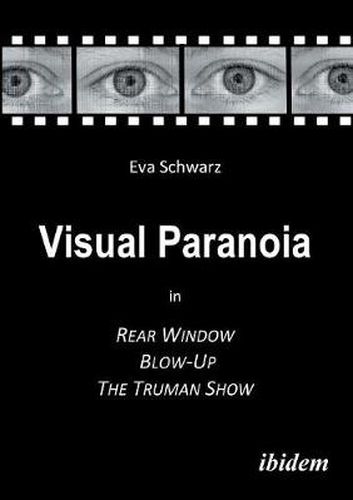Readings Newsletter
Become a Readings Member to make your shopping experience even easier.
Sign in or sign up for free!
You’re not far away from qualifying for FREE standard shipping within Australia
You’ve qualified for FREE standard shipping within Australia
The cart is loading…






This title is printed to order. This book may have been self-published. If so, we cannot guarantee the quality of the content. In the main most books will have gone through the editing process however some may not. We therefore suggest that you be aware of this before ordering this book. If in doubt check either the author or publisher’s details as we are unable to accept any returns unless they are faulty. Please contact us if you have any questions.
Against the backdrop of recent postmodern discourse on cultural theory, Eva Schwarz provides a gripping analysis of the concept of what she describes as visual paranoia. Her study is based on a detailed analysis of three films: Alfred Hitchcock’s Rear Window (USA, 1954), Michelangelo Antonioni’s Blow-up (GB, 1966) and Peter Weir’s The Truman Show (USA, 1998). The starting point of all three analyses is the representation of the postmodern media and information age as an incisive culture of the visual, which coincides with the general socio-political trend of cultural paranoia, the roots of which are to be found in American politics and society of the late 1940s and which has since permeated Anglo-American culture.The discourse on the truthfulness of images, the reality of visual representations and the visual as such forms the context out of which the theory of the development of visual paranoia arises. While other paranoia films, usually thrillers or science fiction films, concern themselves with the sociopolitical manifestation of cultural paranoia, the three films chosen for Schwarz’s study focus on the fundamental crisis of the visual as such, from scopophilic paranoia in Rear Window to photographic paranoia in Blow-Up, culminating in the scopophobic manifestation of visual paranoia in The Truman Show.The once valid saying, seeing is believing , can no longer be taken for granted. In postmodern times, the visual cannot be trusted any more.
$9.00 standard shipping within Australia
FREE standard shipping within Australia for orders over $100.00
Express & International shipping calculated at checkout
This title is printed to order. This book may have been self-published. If so, we cannot guarantee the quality of the content. In the main most books will have gone through the editing process however some may not. We therefore suggest that you be aware of this before ordering this book. If in doubt check either the author or publisher’s details as we are unable to accept any returns unless they are faulty. Please contact us if you have any questions.
Against the backdrop of recent postmodern discourse on cultural theory, Eva Schwarz provides a gripping analysis of the concept of what she describes as visual paranoia. Her study is based on a detailed analysis of three films: Alfred Hitchcock’s Rear Window (USA, 1954), Michelangelo Antonioni’s Blow-up (GB, 1966) and Peter Weir’s The Truman Show (USA, 1998). The starting point of all three analyses is the representation of the postmodern media and information age as an incisive culture of the visual, which coincides with the general socio-political trend of cultural paranoia, the roots of which are to be found in American politics and society of the late 1940s and which has since permeated Anglo-American culture.The discourse on the truthfulness of images, the reality of visual representations and the visual as such forms the context out of which the theory of the development of visual paranoia arises. While other paranoia films, usually thrillers or science fiction films, concern themselves with the sociopolitical manifestation of cultural paranoia, the three films chosen for Schwarz’s study focus on the fundamental crisis of the visual as such, from scopophilic paranoia in Rear Window to photographic paranoia in Blow-Up, culminating in the scopophobic manifestation of visual paranoia in The Truman Show.The once valid saying, seeing is believing , can no longer be taken for granted. In postmodern times, the visual cannot be trusted any more.